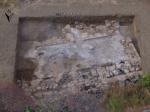Summary (English)
Pantelleria is located between Sicily and Tunisia. It has been inhabited for several millennia by a number of different cultures, each leaving a lasting impression on the landscapes and cultures of the island. One of the island’s most notable, but less well-known, phases was as a Punic settlement. Brief citations from ancient Roman sources, imply that Pantelleria was a pawn in the Punic Wars, being fully captured by the Romans in 217 BCE. The experience of conquered spaces and people at Pantelleria (Roman Cossyra) are, however, left un-discussed in the ancient sources. The findings of the Brock University Archaeological Project at Pantelleria (BUAPP) complement other investigations into the classical periods on the island. The ongoing excavations on the Acropolis of Pantelleria are revealing the remains of the Roman and Punic centers on the island near the main harbour (Schäfer et al. 2015). Also, a previous project in part of the Lago di Venere area (1998-2002) interpreted the Lago site as a Punic and Roman sanctuary (Audino, Cerasetti 2004; Cerasetti 2006).
A primary goal of BUAPP is to investigate the archaeological record for evidence of the nature of cultural interaction at the proposed sanctuary site at the north-eastern corner of the Lago di Venere area. Through the survey, excavation, and finds analysis, BUAPP is developing chronological and cultural understandings of the functions of the study area. The interpretation of the site as a sanctuary must be questioned. The investigations at the Lago di Venere bear great importance for exploring the relationship between the Punic and Roman cultures. Pantelleria holds the potential for illuminating the process of cultural interaction between these two cultures in a crossroads of the Mediterranean.
In 2015, BUAPP consisted of a small team including six undergraduate volunteers. During this season, four test trenches were excavated to determine the accuracy of impressions based on the results of the Ground-Penetrating Radar Survey conducted previously (Urban et al. 2015) and to establish cultural and chronological frameworks of the site. The locations of the trenches were placed in relation to possible architectural features visible in the GPR readings that were deemed critical to explore in the first phase of investigation. The trenches confirmed the general hypothesis of the ancient nature of the architecture (Murray et al. 2017). One trench in particular contained the bottom course of walls constructed of dry-stone masonry with pavimenta punica flooring. The diagnostic pottery dates primarily to the late third to early/mid second century BC, with a small amount representative of the first century BC and first century AD.
- Carrie Ann Murray - Department of Classics - Brock University
Director
Team
- Clive Vella - Joukowsky Institute of Archaeology and the Ancient World
- Maxine Anastasi - University of Malta
- Alexandra Colombini — Elliot Fuller — Thomas Kocjan — Heather Roy — Paul Taranco — Kim Shuert (Brock University)
Research Body
Funding Body
- Humanities Research Institute, Brock University






![Download [PDF]](/excavation/skins/fasti/images/results/download_sml.png)